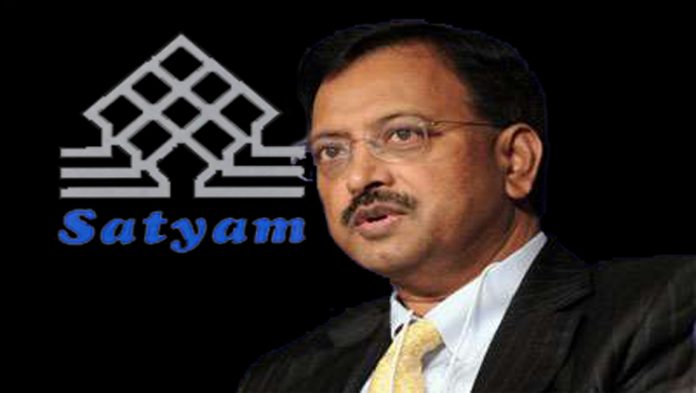This article is written by Oishika Banerji and further updated by Debapriya Biswas. This article provides a detailed case study of the Satyam scam case, focusing on the role played by the parties involved as well as the victims who suffered the aftermath. A brief timeline of the events of the case is also covered in the article. Lastly, the article discusses the response and approach of the government and other regulatory bodies before exploring relevant topics to the case study, such as fraud and good corporate governance.
Table of Contents
Introduction
Corporate scams, as one may be familiar with, are the types of frauds that are usually committed by a company or an individual to benefit themselves at the cost of their consumers and investors. In other words, any illegal and unethical activity committed by a company or the people running the company constitutes a corporate scam.
In 2009, India faced one of its biggest corporate scams—the Satyam scam case, which not only led to changing the whole corporate landscape in India but also raised several concerns about the role of corporate governance and its practices in India. The corporate system as we know it today developed as an aftermath of this scam and the many measures taken to prevent the repeat of such incidents.
This scandal highlighted the loopholes that were present in the auditing system of India as well as the management system of big corporations. All the loopholes, ranging from the centralisation of powers in the Board of Directors to the lack of transparency and disclosure of financial statements of the company will be discussed in detail throughout this article, along with events that had happened during their occurrence.
What is the Satyam scam case
Satyam Computers Services Limited was the company that was at the centre of this fraud. During its prime years, it was one of the biggest Information Technology (IT) companies in India. In fact, it was so popular and successful nationally and internationally for its global clients, investors and partnerships that by 2008, it was ranked among the top IT companies across Asia.
Unfortunately, everything came crashing down when its fraudulent practices were exposed in early 2009, which included manipulation of financial statements, falsification of bank documents and Board’s decisions, forgery of sales invoices, etc. All these fraudulent practices were committed to primarily boost up the company’s statistics and for the personal gain of the parties involved at the expense of the company’s investors and shareholders.
The investigation conducted by various governmental authorities focused on the irregularities in the balance sheets and found that accounts, invoices and even financial statements were manipulated to generate about 7,800 crores of assets that didn’t exist in real life. This scam was not only huge but also quite a long-going one, which exposed the underlying issues in the Indian corporate system that existed for years.
Because of this scandal, the reputation of the Indian IT sector was severely damaged as a whole, making even the Indian government panic due to the ripples caused. And the cause of all this was the former CEO of Satyam, Ramalinga Raju, who majorly carried out this scam.
Background of the scam
The Satyam scam case was a devastating incident whose aftermath lingered even more than a decade after its occurrence. This was primarily due to its magnitude and the long duration it was continued on for.
Several people suffered globally due to this scam, be it the employees and shareholders of Satyam or even Satyam’s clients and partners for that matter. Even the banks that had used Satyam’s shares as mortgage or security faced financial instability, as well as all those companies which had any connection with Satyam, which faced a major financial crisis all across India in general.
As mentioned earlier, this scam was an audit-cum-accounting scandal in which the bank statements of the company were manipulated and falsified with forged supporting documents. As it came out later in the investigation, the entire fraud was committed through deliberate omission of information along with planned forged documents.
Assets of the company were not reported accurately and were increased by a large margin by the CEO Raju to attract more investors and to get higher interest on their deposits in the bank. Both these fraudulent actions couldn’t be achieved without the knowledge of the auditors—or at least, their negligence and carelessness. In fact, a scam of this magnitude should be impossible to go undetected for 7 to 8 years if the auditors or even the Board of Directors were diligent in their duties and responsibilities.

This is one of the major reasons why the auditing agency PricewaterhouseCoopers (hereinafter referred to as ‘PwC’) was investigated thoroughly alongside its client Satyam. As external auditors of the company, they should have been able to detect the scam, even if the internal auditors didn’t or wouldn’t. However, this didn’t happen.
As later revealed in the investigation report by the Serious Fraud Investigation Office (SFIO), all the auditors involved in this case were either extremely negligent in their auditing practices or were involved in the fraud as an accomplice. Let us dive deeper into the incident to understand the circumstances around the scam a little better.
About Satyam Computers Services Limited
As discussed earlier in the article, Satyam Computer Services Limited was once one of the topmost brands among all IT companies in India. Its revenues had crossed $1 billion before the scam was exposed. It was founded by Ramalinga Raju in 1987 with its headquarters in Hyderabad, India. Within the next few decades, it grew rapidly and expanded its branches and other offices to various states of India along with 65 other countries globally.
By the 2000s, Satyam’s brand value increased so much internationally that they became the first Indian company to be listed on the global stock exchanges New York Stock Exchange (NYSE), Dow Jones and EURONEXT. Even in India, Satyam was considered to be the fourth largest software exporter after Tata Consultancy Services (TCS), Infosys and Wipro. Many of the subsidiary companies of Satyam also gained popularity in the IT sector, especially Satyam Infoway (later renamed to Sify Technologies Limited), which became the first Indian digital company to be listed on the American stock exchange NASDAQ.
In 2000, Satyam introduced the world’s first customer-oriented global organisation training program, which focused on training the IT and management skills of the employees of its client companies. Not only was it the first training of its kind but it also started the trend of skill-based courses as we know it. Many world-renowned companies, such as Microsoft, Ford, Emirates, TRW and i2 Technologies, had partnered with Satyam for the training program. This led to Bureau Veritas (BVQI) certifying Satyam under its list.
Each passing year brought new achievements to Satyam and their increasing total revenue reflected it as well. The revenue of the company in the fiscal year 2003-2004 was reported to be about Rs. 25,400 million, which became thrice of it in 2007-2008. In a worldwide IT business, the company was a rising star and a household brand. Unfortunately, Satyam became the focus of a large accounting scam within less than five months after earning the Global Peacock Award.
Timeline of the Satyam scam

| S. No. | Date of the events | What happened |
| 1. | June 24, 1987 | Satyam Computers was launched in Hyderabad. |
| 2. | 1991-92 | Debuts in the Bombay Stock Exchange (BSE) with an IPO oversubscribed 17 times. |
| 3. | 2001 | Becomes the first Indian company to be listed on NYSE. |
| 4. | 2006 | The NYSE revenue of Satyam crossed $1 billion. CEO Raju becomes the Chairman of the National Association of Software and Service Companies (NASSCOM). |
| 5. | 2007 | Raju was declared the ‘Entrepreneur of the Year’ by Ernst & Young. The FIFA World Cups declared Satyam as their official IT services provider for their matches in 2010 in South Africa and 2014 in Brazil. In addition, Satyam also became the first Asian company to be featured in the list of ‘Top 125 Companies’ by Training Magazine for the category workforce training and development. |
| 6. | September 23, 2008 | The Institute of Directors (IOD), awarded the Golden Peacock Award for Excellence in Corporate Governance to Satyam in the category of risk management and compliance issues. |
| 7. | December 16, 2008 | Satyam Computers announced the acquisition of a 100% share in Maytas Properties and Maytas Infra, which was known to be owned by Chairman and CEO Ramalinga Raju’s sons. This proposed acquisition of about $1.6 billion was cancelled within a few hours of its announcement because of strong opposition by the shareholders and investors of the Satyam company. This led to Satyam’s share prices dropping 55% on the NYSE. |
| 8. | December 23, 2008 | The World Bank banned Satyam as its customer for a period of 8 years. The reason given for the ban was that Satyam was found conducting fraudulent activities, which included providing illegal incentives to the employees of the World Bank and irregularities in the costs of the contractual documentation with the company’s subcontractors. |
| 9. | December 25, 2008 | Satyam issued a statement demanding an apology from the World Bank for the prohibition since it resulted in a loss of reputation and goodwill of the company. They also asked for a comprehensive explanation of World Bank’s claims for the ban.It was noted by many that Satyman seemed to have only challenged the statements made by the World Bank personnel regarding the illegal incentive and avoided addressing the irregularities found in the contractual documentation. |
| 10. | December 26, 2008 | Four directors from Satyam’s Board resigned one after the other. This included the independent director Mangalam Srinivasan along with other Board members like Vinod Dham and Krishna Palepu. |
| 11. | December 28, 2008 | A Board meeting was to be held on 29 December 2008, which was postponed to 10 January 2009. This delay was made by Satyam to buy themselves some time from the management restructuring that would be most likely proposed due to all the recent events. Not to mention, the Board members of Satyam were planning to adjust their share purchases. To help in their planning and strategy, Merrill Lynch was hired by the company. |
| 12. | January 2, 2009 | The shares of all the promoters of the company decreased from 8.64% to 5.13%. |
| 13. | January 6, 2009 | The promoter’s shares decreased further to 3.6%. DSP Merrill Lynch from the i-bank of Satyam met with the Securities and Exchange Board of India (SEBI) to talk about the irregularities in the balance sheets of the Satyam company. |
| 14. | January 7, 2009 | CEO Ramalinga Raju confessed to his fraudulent activities and the scam came to public knowledge. He claimed to have manipulated the accounts and balance sheets of the company to showcase the profits of the company much more than they were in reality. According to him, the company’s profits were overstated by about Rs 50,400 million in total.The reputation of the Indian IT sector was jeopardised globally because of this scam. NASSCOM and other Indian outsourcing companies immediately released their official statements to defend the credibility of the rest of the Indian IT sector and reassure the public. |
| 15. | January 8, 2009 | The Citibanks, along with any other bank connected to Satyam’s finances, froze all thirty accounts of the company. The salaries of the employees were delayed because of the company’s financial issues caused by the scam.While Satyam tried to do damage control after the exposure of the scam, law firms Izard Nobel and Vianale & Vianale filed class action lawsuits in the USA against Satyam on behalf of the American shareholders. |
| 16. | January 9, 2009 | Ramlinga Raju and his brother were arrested by CID Andhra Pradesh police on the charges of fraud, conspiracy, cheating, breach of trust and falsification of records. |
| 17. | January 11, 2009 | Since the former Board of Directors were under investigation, the Indian government appointed three new directors to replace them and operate the Satyam company for the time. The newly appointed directors included Deepak Parekh, C. Achuthan and Kiran Karnik. |
| 18. | January 12, 2009 | The newly appointed Board of the Satyam company arranged a news conference to address the public at large. They reassured the shareholders and its consumers that the company was trying out various measures to obtain more capital for its daily operations. The advance payment for the services provided by Satyam from the company’s AAA-rated (highest credit rating) customers and clients was discussed as a possible measure as well. |
| 19. | January 23, 2009 | PwC auditors and partners S. Gopalakrishnan and Srinivas Talluri were arrested by the CID Andhra Pradesh police as suspects in the Satyam scam. |
| 20. | April 6, 2009 | The Central Bureau of Investigation (CBI) filed a 2,315-page chargesheet against the people responsible for the scam. |
| 21. | April 13, 2009 | Tech Mahindra bought the majority shares of Satyam at Rs. 58 per share and acquired the company. |
| 22. | 2011 | PwC paid about $25.5 million in compensation to the foreign investors of Satyam. |
| 23. | March 21, 2012 | Tech Mahindra merged at an 8.5:1 ratio with Satyam to form the fifth-largest IT export company in India. Their combined revenues were calculated to be about Rs. 10,000 crores. |
| 24. | September 17, 2013 | Fresh proceedings were rendered by the US Court to investigate the claims and charges against Satyam in the context of its partnership with the American company Venture Global Engineering (VGE). |
| 25. | July 16, 2014 | Raju and his brother, along with other former members of the Satyam company, were barred by SEBI from the security market for 14 years. Additionally, SEBI asked them to return an amount of Rs. 1,849 crores with interest that they had gained through this scam as per their calculations. |
| 26. | January 7, 2015 | The Reserve Bank of India (RBI) started investigating the companies and businesses run by Raju, his brother and all the other perpetrators of the scam. This was done to identify any front companies run by them that may have been used in the scam. |
| 27. | April 9, 2015 | Raju, his brother and the other eight accused of the Satyam scam were found guilty by the special CBI Court of fraud, cheating, forgery and breach of trust. |

What led to the Satyam scam
Acquisition of Maytas companies
It all started in late 2008 when the CEO and Chairman of the Board of Directors, Ramalinga Raju, announced the acquisition of the two companies, Maytas Infrastructure Limited and Maytas Properties Limited. The proposed buyout was valued at about $1.6 billion and was supposed to be used from the company’s available capital and cash.
This decision, however, was solely made by the Board of Directors without taking into account the opinions of the shareholders and investors of the company. On 15 December 2008, the purchase of the two Maytas companies by Satyam was announced to the public, ignoring the dissenting opinions. This resulted in the shareholders unifying to make a strong opposition. By the end of the day, the announcement was withdrawn.
A lot of concerns were raised against the internal governance of the Satyam company because of how the investors’ and shareholders’ opinions were ignored. The withdrawal of the purchase affected their reputation in the market and resulted in the value of their shares dropping by more than half their price.
World Bank’s prohibition
Right after this incident, the World Bank declared the banning of Satyam as their customer for a term of 8 years, which was the highest period of prohibition they could award anyone at the time. The claims against Satyam that caused the prohibition included fraudulent activities like providing incentives to the employees of the World Bank and irregularities in the contracts with Satyam’s subcontractors. This proclamation was met with further confusion and panic from the public, especially the customers and investors of the Satyam company.
Replying to their proclamation, Satyam released their own statement where they demanded an apology from the World Bank for damaging their reputation in the market. They further asked for an explanation behind the claims made by the World Bank but Satyam didn’t seem to make any attempt to defend themselves from the claims. There was no refutation nor was there any direct addressal of the same.
As the market was reeling from this announcement of the World Bank declaring Satyam unfit as a business partner or customer, four members of its Board of Directors resigned abruptly. These members included the independent director Mangalam Srinivasan, along with the other three directors, Vinod Dham, M. Rammohan Rao and Krishna Palepu. It was assumed that they quit due to the World Bank’s statement and the previous debacle with buying out the Maytas companies.
Satyam was supposed to have their next Board meeting for the directors and upper management on 29 December 2008, which was delayed to 10 January 2009. This postponement gave the company enough time to evaluate and list all the options for a strategic buyback of its shares from the market. As the meeting would likely discuss management restructuring, this delay provided the company with the much-needed time to plan for the share redistribution.
Exposure of the scam
The meeting, however, didn’t end up happening since on 7 January 2009, CEO and Chairman Ramalinga Raju submitted his resignation along with a letter where he confessed to the fraud he had been doing for the past few years in the company. He was the one who was mostly responsible for the Satyam scam since he had manipulated the accounts of the company to create about Rs. 7,800 crore of assets that don’t exist in real life.
In the aforesaid letter, Raju explained his plan of converting this fabricated money of the company into ‘real’ ones by buying out the two Maytas companies that were owned by his family members. Even the deal itself was almost equivalent to the value of the fictitious assets. In this way, he would just transfer the ownership of them to Satyam while not actually taking any money into consideration but showing otherwise on the paper.
All this was planned to prevent his manipulation of the balance sheets of the company from being ousted, which he mostly did so to attract more investors and shareholders while also meeting the expectations of the accountants. However, with each year, the gap between the accounted profits and actual profits of the company increased. By the end of it, a void of about Rs. 7,800 crore was created in the overall assets of the company. “It was like riding a tiger and not knowing how to get off without getting devoured,” he said in his letter.

Everything mentioned in his letters was later confirmed during the investigations conducted by the Indian government and various regulating authorities under it. It was found that the Maytas companies were a type of front company of Raju’s sons, which he planned to use as a means to hide the traces of his scam. It was a perfect deal, where he planned to absorb all the false assets to justify their non-existence as being ‘spent’ for the purchase.
Unfortunately, the deal was cancelled and the scam was exposed. Both the Raju brothers, Ramalinga Raju and Rama Raju, were arrested by the Andhra Pradesh police and were charged under the Indian Penal Code, 1860 (IPC) with forgery (Section 463), cheating (Section 417), criminal conspiracy (Section 120B) and criminal breach of trust (Section 405).
Government taking over Satyam
Meanwhile, the Central Government took over Satyam by appointing a new Board of Directors to run the company while its promoters were arrested and four directors had resigned. Even the rest of the members of the upper management of Satyam were under investigation, making the operation of the company quite hard. Thus, to avoid the company from going under and winding up, new members were introduced.
The new members included Deepak S. Parekh, who was the chairman of the Housing Development Finance Corporation (HDFC), C. Achuthan, who was a former SEBI member and director of the National Stock Exchange (NSE) and lastly Kiran Karnik, who was an IT specialist for the government and the former president of NASSCOM. The Central Government appointed more members later on as per the need of the time, with the most prominent among them being Tarun Das, the ex-president of the Institute for Chartered Accountants (ICAI) and S. Balakrishnan, who was a former member of the LIC.
Suspicion over auditors
Besides the promoters and directors of the company, the auditors were also under investigation for possible involvement in the scam. Both the audit committee of the company as well as PwC were thoroughly interrogated while their data was collected for evidence.
Since PwC had worked with Satyam for years but claimed that they weren’t able to detect any of the fraudulent activities, they were suspected as accomplices with Satyam. However, PwC denied these suspicions and asserted that they were unable to detect any suspicious activities in Satyam’s balance sheets due to their negligence.
As per PwC, they made their audit records for Satyam based on the account reports and financial statements provided to them by the company. They did not use their own tools nor did they take any measures to confirm the data provided to them. They admitted that it was their negligence and carelessness that resulted in the delay of the scam being exposed.
However, despite this, the senior partners and auditors of PwC, S. Gopalakrishnan and Srinivas Talluri, were arrested by the CID branch of the Andhra Pradesh police on the charges of fraud under Section 420 of IPC and criminal conspiracy under Section 120B of IPC.
Other frauds in Satyam
Besides this, the investigation also uncovered the fraud committed by Satyam’s CFO Srinivas Vdlamani who had apparently created fake accounts of about 10,000 employees to generate Rs 20 crore as salary each month. These salaries would then be transferred and deposited into his own account.
Lastly, during a raid at the houses of Raju and his younger brother Suryanarayana Raju, 112 sale deeds were found that were of different lands and properties under the name of various family members and relatives of Raju. This proved that he was diverting a lot of the funds from the company under his and his family’s name.
Parties who were responsible for the Satyam scam case
As globally agreed by many, the Satyam scam was majorly started and caused by Ramalinga Raju during his tenure as the Chairman and CEO of the company. He confessed to the same and even the investigation yielded the results of how he manipulated bank statements to create about Rs 7,800 crore of fake assets of the company.
However, there were other people who also played a role in this and that included Raju’s brother, the CFO, the managing director and even the internal auditors of Satyam. Each of these people was detained by the authorities for investigation and then charged when found guilty.
Even when not found guilty of the scam, the Board of Directors of Satyam were still at fault for not detecting these irregularities in the first place. Their failure to notice the scam early on led to the magnitude of the scam increasing.

Significant role played by Ramalinga Raju in the Satyam fraud case
As discussed earlier, Ramalinga Raju was the main perpetrator of the Satyam scam. In fact, it was his face that the media and even the government used to represent the scam after it was exposed. His actions resulted in $1.47 billion of fake assets of the Satyam company that were supposed to exist in the form of cash and bank loans.
As per the investigation, Raju had started this fraud about 7 to 8 years before it was caused; that is, around the 2000s or so. During all this time, the company’s profits were changed to show a higher amount and match the expectations of the financial analyst. And to provide proof for the same, Raju presented manipulated bank statements and fake sales invoices.
With the help of the head auditor of the global branch of Satyam, Raju successfully created 6,000 fake bank accounts which he then used to fabricate bank loans and diverte the deposits made by Satyam in them to his own. Raju also confessed that the global head auditor had also helped in creating profiles for fake customers on the names of whom they charged fake sale invoices.
Additionally, the documents relating to Board decisions about these transactions were also forged by Raju. One of these decisions that were forged was about the funds given by the United States through American Depository Receipts that were not even recorded in the balance sheets of the company. All these funds were transferred to the private accounts of the perpetrators of the scam instead.
Raju claimed during the initial interrogations that he didn’t transfer any of the corporate funds to his accounts or use any of them for his own personal use despite all the aforesaid findings. He insisted that he only manipulated the profits of the company on paper and nothing beyond that. However, he confessed later on that he had pocketed a lot of the funds of the company and moved it to the front companies owned by him and his relatives for the last five years of his tenure.
Silent role played by Satyam’s auditors
The auditors hired for Satyam were suspected as accomplices to the fraud due to the nature of the corporate scam being of accounting and audits. This included the internal auditors of Satyam as well as the external auditing agency PwC who worked with Satyam for almost a decade.
The scam was also found to be just as old because of which the PwC was suspected and criticised heavily. It didn’t help that Satyam paid them almost double the amount of what was usually paid to the auditing companies. In simpler terms, PwC was paid double the amount of what the industry standards for auditing were. Based on this, many believed that the scam was intentionally hidden by PwC in the name of carelessness and negligence.
During the investigation into the scam, it was discovered that the auditors of PwC didn’t use their own tools for auditing and relied on what was provided to them by Satyam. Instead, they were using the balance sheets provided by Satyam without verifying it or even checking the genuineness of the invoices and bank statements.
According to SFIO, the only reason the scam came to public knowledge was because of an anonymous email that was sent on 18 December 2008 to Krishna Palepu, who was the independent director of Satyam at the time. It briefed about the details of the scam as well as the plan to cover it up by buying the Maytas companies.
The email was sent by someone named ‘Joseph Abraham’ that no one was able to trace back to since it was a fake name and most likely used as an alias to protect the identity of the sender. However, Krishna Palepu still didn’t hesitate to forward the contents of the email to his fellow independent directors of the company to discuss the same.
The anonymous mail was also forwarded to M. Rammohan Rao after that, who was the chairman of the audit committee in Satyam. He read over its content before sending it to S. Gopalkrishnan to check and confirm the details as the representative of PwC.
Gopalakrishnan dismissed the claims made in the email and reassured Rammohan that a meeting of all the auditors and the audit committee would be held on 29 December 2008 to address this email and its contents but that meeting never ended up happening.

Contribution of Satyam’s Board of Directors to the scam
Before the scam was disclosed, Satyam had 9 directors on its Board, five of which were independent as required by Indian listing rules. However, there was a major concern over whether the directors were actually independent or not. Another concern that was raised alongside this was the absence of any financial specialist on the Board which would stand to be seen as a crucial mistake in the future.
Most of the members of the Board of Directors were well-known in the corporate field, making them appear capable and trustworthy. Since their credibility was high and good, the concerns raised previously were brushed aside and not given any attention. Some of these directors were:
- Krishna Palepu, who was a corporate governance specialist and a Harvard professor;
- M. Rammmohan Rao, who was the dean of the Indian School of Business at the time;
- Vinod Dham, who was one of the inventors of the Pentium Processor;
- And many more.
Their credibility crumbled after they blatantly ignored the shareholders’ opinion and tried to purchase the Maytas companies. It became almost non-existent after the Satyam scam case was exposed and all the directors came directly under public scrutiny.
Talks about the restructuring of the upper management of Satyam were going on even before the scam was disclosed to the public. However, the meeting it was going to be discussed in was postponed and then never happened as the directors resigned one after another. Satyam’s Board of Directors were accused of not actively monitoring the operations of the company and the scam going undetected for years proved this point.
The directors also seemed to miss the fact that the promoters of Satyam were decreasing their shares in the company each year. Raju especially seemed to sell most of his shares between 2005 (when his shares were 15.67%) to 2008 (when his shares were only 2.3% in the company). This helped him to avoid financial losses after the scam came to public knowledge.
Victims of the Satyam scam case
The victims of the Satyam scam were many, let it be nationally or internationally. From the direct victims like investors, creditors and employees to the circumstantial victims like Banks, partner companies and affiliated businesses.
The first ones to react were the clients and customers of Satyam who immediately went to reevaluate their contracts with the company. After the scam was exposed, Satyam company’s reputation and credibility dropped quickly. This also affected the companies that were publicly known to be partnering with them. Thus, to avoid the bad reputation, many of its clients cut off their deals and switched to other IT companies. The lack of trust due to the corporate fraud was also one of the primary reasons for customers jumping ship to other firms. Big companies like Cisco and Telstra cancelled their contracts immediately after the whole debacle.
Because of the decrease in clients and customers, the company faced even more financial hardships. The fake assets were already a blow to the company’s finances and its shares falling through the market along with decreasing client base only worsened it.
Shareholders, investors and creditors of the company were directly hit with this sudden financial loss just as the company was. Those with their money on Satyam’s shares witnessed the most visible decline as the price of the company’s shares fell lower day by day. In fact, this scam had also marred the reputation of other IT companies making people lose trust and interest in the Indian IT sector. Even the government of India became worried about the effect this scam would have on Indian outsourcing companies and their international clients and investors.
Meanwhile, the hit to the economy was felt keenly by those working directly under Satyam. Its employees faced the issue of non-payment of their salaries for a good few months given that the company was in a money crunch due to the scandal. Satyam was at its worst point financially and its employees felt and went through it too.
Additionally, the people who used Satyam’s shares as securities or mortgages for their loans also faced a lot of issues. The banks having these shares as mortgages were worried about the recovery of financial and non-financial exposure since their value declined overnight. Not to account for the small companies that were under Satyam or had a direct partnership with them.

Fraud: A common sight in corporate society
As mentioned earlier, the Satyam scam case was not the first of its kind. Fraud is a common sight in almost all industries, including the corporate society where it is easier to hide behind the face of a company.
Many use the face of the company to commit scams since a corporation is legally identified as a separate entity from the individuals running it. This results in a variety of loopholes and a lack of trust in the industry once the scam comes out.
In the case of the Satyam scam, there was a blatant manipulation of corporate funds and the official balance sheets that reported them. The main victim of this all was the public whose money was invested in their shares, stocks, businesses and more since they were the ones to believe in the skewed statistics released by the company.
This whole scandal caused many people to raise concerns over the lack of financial disclosures by corporations to even their own shareholders and members of the company. The growing trend of frauds in the corporate field was becoming quite alarming with each passing day.
This accounting scam brought in two different views while discussing the need for transparency and mandatory disclosure in the auditing field:
- The need for forensic auditing and accounting skills is dire. Auditing committees and agencies need to have certain independence from their client and strict guidelines to follow to ensure there is no pecuniary interest arising during their services.
- The regulations for corporate governance need to be altered and renewed to avoid such scams from happening. Public pressure should be applied to the government if the reforms aren’t implemented with the time and need.
Both these views are distinct but share the same purpose of resolving the concerns over the lack of transparency and disclosure in the corporate field.
Hiring third-party financial specialists or experts ensures the objectivity of the auditing report while also increasing its credibility in case of fraud detection. However, not every company can afford such experts. Thus, new scientific methods need to be introduced for better detection of scams and measures need to be established when any such fraud is indeed found by the auditor.
This is where the role of new rules and regulations for auditors and corporate governance will come in handy since they will dictate the process for the same. With the old structure, loopholes found during the Satyam scam would be exploited by other scammers again.
To prevent this, a new corporate structure was needed that addressed not only all the loopholes but their repercussions and also promoted good corporate governance practices.
Loopholes leading to Satyam scam
There were many loopholes and issues in the corporate structure back then that continued for years before the Satyam scam case was exposed. After it came to light, the Indian government kickstarted the much-needed changes to correct the loopholes, some of which are discussed as follows:
Absence of objective auditing system
This whole incident highlighted that there was a distinct lack of an objective auditing system that was scientific in nature. In the Satyam scam case, PwC was reported to not have any independent tools or system for auditing that wasn’t directly extracting the data of the records provided by Satyam.
While depending on the balance sheets of the client was understandable, not verifying any of the data or details of accounts provided was a fatal error. The lack of any verification led to the scam slipping right under the nose of the auditors. External auditors like the PwC firms should have their own auditing tools and mechanisms separate from those of their clients to prevent manipulation of data.
Negligence of the directors of Satyam
Negligence and carelessness of the Board of Directors not only towards the company’s finances but also towards their duties and conduct as directors. This negligence continued for years until the push came to shove and a scam of this magnitude was disclosed.
Before this, the lack of transparency regarding the financial statements of the company wasn’t even questioned by any member. Furthermore, their willingness to go forward with the acquisition of Maytas despite the shareholders’ disapproval also highlighted a big flaw in the company’s dynamics.

Too much power in the hands of CEO
There was a centralisation of power in this case when the position of CEO and Chairman was given to the same person. The Chairman of the Board of Directors usually has the power to sway the decision of the Board in their favour. Add the executive role of CEO to that and the power too becomes concentrated for one person.
Lack of checks and balances
There was no system of checks and balances because of which no one could directly intervene or correct the ways of the board of directors.
SEBI’s report
The above-mentioned loopholes were also mentioned in SEBI’s 65-page investigation report of the Satyam case, some of which are expanded on as follows:
- Manipulation of bank statements and balance sheets to ‘increase’ the profits of the company, if only on paper: This made the company look more profitable and attractive for investments. This method worked for quite a few years as well, making the company one of the largest IT companies in India and Asia, with foreign investors and partnerships. However once it was exposed, a huge array of financial losses followed its wake.
- Failure to properly evaluate and verify the statements and accounts by the auditors: SEBI’s report emphasised the most on this issue since the scam could have been easily stopped with little losses if it had been detected early. However, none of the external auditors were able to detect nor suspect it despite multiple checks over several years of auditing. Meanwhile, the internal auditors were in compliance with the scam.
- Failure of the Board members to perform their duty and due diligence: They did not ensure good corporate governance in the common nor could they detect the ongoing scam despite its magnitude. It highlighted how they were not properly managing the company at all.
- Insider trading had been committed by the upper management of Satyam: According to the summarised report, there were clear traces of the exchange of insider information amongst the management of the company, which could be seen through the shares distribution. Some of the members of the company were told beforehand about the scam and its unravelling in the most chaotic way possible.
The report by SEBI explored the failure of regulatory authorities in India to oversee the workings of such big corporations. Since Satyam was one of the top IT services companies, the Ministry of Corporate Affairs (MCA) should have kept a check on them. However, that didn’t happen for several years and a scam of this magnitude was the result.
Legal compliance in case of fraud
Fraud can be published under both criminal and civil law depending on which provision the lawsuit is filed under. For criminal charges, IPC has several provisions based on the type of fraud committed, be it forgery (Section 463), cheating (Section 417) or dishonesty (Section 420).
Even the newly enacted Bharatiya Nyaya Sanhita, 2023 (that replaced IPC) has different provisions for different kinds of fraud, let it be dishonesty (Section 318), making false documents (Section 335), falsification of account (Section 344), counterfeiting marks or signs (Section 342) and many more. Section 447 of the Companies Act, 2013 also criminalises corporate fraud; a provision which was added as a reform after the Satyam scam was exposed.
For civil law, Section 17 of the Indian Contract Act, 1872 (hereinafter referred to as ‘ICA’) defines fraud as any act of the party or its agent to deceive the other party. Such acts can include false representation, misleading assertions or concealment of facts or even lack of transparency concerning information that can be detrimental to the contract. The intention behind these actions is to gain unlawful benefit at the expense of the other party.
Promises that the party has no intention to fulfil or are impossible to fulfil can also be considered fraud, especially if the promisor knew he wouldn’t fulfil the promise even before making it. Let us dive further into what exactly is fraud and the essentials that constitute it:
- As per Section 17 of the Act, fraud is committed by the party involved in the contract or at least his agent.
- There should be intention behind the actions of the party.
- The party that is deceived must have some kind of damage or injury. In case there aren’t any damages or injuries, seeking relief can be tricky.

Factors constituting fraud
The following are the factors that can be considered a fraud under the Indian law:
False representation of facts
As per Section 17(1) of the ICA, 1872, if one of the parties deliberately misled the other party then it would be considered fraud. This is especially the case if the party knows that they are giving false information or inaccurate facts. Furthermore, if the party had not verified the facts despite not being confident in its accuracy then it is classified wilful deception punishable as fraud under Section 17(1). Any deliberate action leading to false representations in the context of corporate affairs is recognised as a corporate fraud under Section 447 of the Companies Act, 2013.
Promising without any intention of fulfilment
According to Section 17(3) of the ICA, 1872, it is a fraudulent contract if a party has made promises or agreements without planning to fulfil them either partially or completely. If the one doesn’t want or cannot fulfil the promise made then they are obligated to let the other person know. There should not be any delay or stringing along from the party since it gives the other party (who is being deceived) a false hope that you would fulfil your part of the performance even when you don’t plan to or can’t. This includes promises from the party’s agent or representative.
Another situation that can be included under this category is if a party enters into a contract with another party with the consideration to prevent the performance of another contract or agreement. For instance, if A and B were in an ongoing agreement but C offered A a contract with the condition to not perform his agreement with B or break off that agreement. The second contract would be fraudulent in nature.
Similarly, it is fraud if A entered into an agreement with B despite knowing that he cannot pay for the consideration of the contract and hasn’t let B know about the same. The omission of his inability to pay is fraudulent in nature as well.
This can also be said for considerations that are plausible to give but not within the period mentioned in the agreement or contract. For instance, if A promised B to complete the building of his house within a year which is objectively not possible.
Omission or concealment of facts
As discussed previously, if any fact that is detrimental to the contract or agreement is concealed, then it would be fraudulent in nature. The same is the case for the omission of facts that can affect the agreement as per Section 17(2) of the ICA, 1872
There shouldn’t be any confusion or misinformation between the parties regarding the contents of the agreement. Any lack of disclosure would lead to fraud since many contracts create a legal obligation to disclose relevant information.
One of the essentials for this type of fraud is that such omission or concealment needs to be active and intentional. If the other party never concealed the fact actively and implied the same then it would not constitute fraud. The same is true if the fact is obvious in nature and can be found out with basic due diligence.
For instance, A and B entered into a contract for property transfer that has been in the family for generations. The fact that the property is old and not in much of a good condition is not mentioned directly but is implied in each conversation. Thus, this would not be considered fraud.
However, if there is any major damage in the property that can significantly affect the cost of the property then it becomes A’s duty to disclose the same to B. If he maintains his silence on that then it would constitute fraud.
While silence in itself is not fraud, it can be taken as such in the following situations:
- When it is the legal obligation of the party to relay any relevant facts to the contract. Duty to communicate may also emerge in the situation of an uberrimae fidei contract or where one party lacks the means to seek the truth and must rely on the information provided by the other. Thus, if the parties do not have a fiduciary relationship, there is no need to communicate, and even if silence is regarded as deception, it does not constitute fraud.
- When the silence of the party can result in misrepresentation or misunderstanding of the other party. For instance, A agreed to rent his apartment to B as a tenant. However, due to heavy leakage during the rainy season, a part of the apartment is damaged. If A doesn’t let B know about this fact then silence would be considered fraudulent here.
- When circumstances change after the agreement is made. For instance, L promises to marry K and have a family together. However, L comes to know about his infertility after a medical examination. If L keeps silent about his medical issue despite knowing K wants to marry and have a family with him then it will be fraudulent in nature. Here L owes it to K to let them know the change in circumstances that would affect the agreement directly.
- Statements that are half-truths or not complete information. For example, M claimed a property to be his even though it currently belonged to his parents and he would inherit it after their deaths. In this case, the half-truth of him being the owner (but not yet) is equivalent to a lie. Suppression or omission of information can easily lead to suggestio falsi (lying to mislead someone).
- Any other acts of omission or concealment are recognised as fraudulent by law or the courts.

Acts declared as fraud by law or court
Section 17(5) of the ICA, 1872 states that any other acts or omissions that courts and laws specifically mention as fraudulent in nature are to be considered under this category. This would include acts like dishonesty, cheating, forgery, etc. It basically gives space for precedents to act as a guide since fraud has also developed with time.
As held by the Supreme Court of India in the case of Avitel Post Studioz Limited and Ors. vs. HSBC PI Holdings (Mauritius) Limited (2020), Section 17 of the ICA, 1872 is only applicable for contracts that are fraudulent or are made to deceive or rip off the other party. If the contract is valid and its consideration or performance is also valid, then this Section would not be applicable even if it is impaired by fraud or deceit of the other party.
Thus, if the contract is not fraudulent in nature, Section 17 would have no scope nor jurisdiction in such a case Damages can be claimed for the non-performance of the contract for such a case but the contract itself couldn’t be declared void or invalid.
Burden of proof for fraud cases
In fraud cases, the burden of proof usually lies with the plaintiff. It is the obligation of the plaintiff to establish prima facie evidence, which may include written contracts, invoices, emails, chats, bank statements, etc.
Circumstantial evidence can also be conferred as evidence in the court of law. In this scam case, CEO Raju had a legal obligation to not only disclose the financial information to the upper management of Satyam but also discuss it and make orders. He not only failed to do so but actively avoided doing the same.
The copies of his fake sales invoices, forged board meeting documents as well as manipulated bank statements are also evidence that the plaintiff required to prove the fraudulent activities of Raju and all the other perpetrators of the scam. Anything that shows their involvement or even knowledge of the scam would make their behaviour fraudulent in nature.

In fact, Raju’s decreasing shares in the company just before the scam was disclosed can also be held as evidence of his fraud. His concealment of other corporate funds and transferring them into his own personal accounts are also enough evidence to prove his involvement in the scam.
In case the parties in the contract are in a fiduciary relationship, both are obligated to deal with trust and honesty. Each party should do their due diligence as well, let it be the evaluation of the bank statements or checking on what stage the performance of their contract is.
If the power of balance between the parties is tilted in favour of a party, there is a high chance of coercion or deceit by the party that is in power. This can be seen in the cases where one party owes the other party money (like landowners) or if one party works for the other.
In the case both parties are at fault, counter-claims can be filed by the other party, which would essentially complicate the case. Such cases are known as pari delicto (in equal fault) and are often very lengthy in its procedure since the court has to evaluate all the claims by both parties to decide the amount to be compensated to each party.
Consequences of fraud
Section 19 of the Indian Contract Act, 1872 provides the remedy for any contract which is made without the free consent of a party. In simple terms, if the consent to any contract is taken by fraud, misrepresentation or coercion then this Section allows for the contract to be voidable at the option of the deceived party.
As mentioned, it is not a void contract; it is voidable in nature. That is, it can be declared void if taken to the court. If the deceived party does not take it to the court to annul the contract despite knowing its fraudulent nature then it means he waivers his right to do so.
Usually, such contracts are made voidable at the option of the deceived party to avoid further harm from happening to them. For instance, P told M that his property was in great condition and sold it on that proposal. However, in reality, the property was a fixer-upper that had a lot of renovation needed to be done due to its poor condition.

In such a case, M may or may not void the contract based on his needs and circumstances. If he doesn’t have any other place to stay or enough money since he paid everything for the current property and plans to not file a lawsuit then the contract shall stay valid. If he thinks it’s better to get the contract declared void, he can approach the court for the same.
Cancellation of the contract would only hamper him since he would have to return the property as per Section 64 of the Act. Any advantage gained from the contract would have to be reinstated once the contract is cancelled or declared void.
The case Doyce vs. Olby (Ironmongers) Ltd. (1969), laid down some principles regarding the compensation for damages in fraud cases. They were reiterated by the Supreme Court of India in the case of Avitel Post Studioz Limited and Others. vs. HSBC PI Holdings (Mauritius) Limited and Others (2020). These principles are also applicable to the Satyam case and are thus given as follows:
- If the contacts are found fraudulent in nature and the defendant is guilty of the same, then it is his legal obligation to return any and all advantages or benefits he has received from the contract. It shall also include the reimbursement for the damages faced by the plaintiff due to this contract. In foreign countries, even emotional damages are considered in such cases.
- All the damages faced by the plaintiff due to the contract, let it be as direct or indirect consequences, shall be compensated by the defendant. This is also an obligation the defendant has once he is proven guilty.
- The court should cover all the aspects when calculating the amount to be compensated to the victim. This includes the value of damage, the delay in getting the compensation since the lawsuit was filed, the interest the plaintiff may have gotten if he had used the money somewhere else instead of the fraudulent contract, etc.
- The compensation for fraud specifically in property cases may include the market value of the property at the time of purchase along with reimbursement of any other interests or money spent on the property. This is the general rule for property agreements, though this may not be applicable to all cases since the circumstances and facts of each tend to vary.
- In special cases, the general rule may not apply. These cases include:
- When the misrepresentation of facts continued after the transfer of property and lasted for a considerable amount of time.
- When the plaintiff has found himself trapped with the property as a result of the fraud. For instance, the plaintiff bought a damaged house with all the money he had saved and now does not have enough money to file for a lawsuit. His only option here might be to stay in the property till he can have enough funds to file against the fraud.
- When the plaintiff did not attempt to minimise any of the damages he was facing because of the fraud despite being able to. If no reasonable steps are taken to minimise the damage then such damage would not be compensated for, especially in cases where the plaintiff is aware of the damages as well as the fraud.
Aftermath of the Satyam scam case
The aftermath of the Satyam scam case was initially panic in the public and a frantic shares sellout frenzy amongst the public. This led to the company suffering even more financial loss before the Indian government had to step up to take control. Investigations were conducted by SEBI and the Ministry of Corporate Affairs while the Satyam company was taken under the government to prevent it from closing down.
The Central Government appointed new directors to replace the former Board of Directors that was still under investigation. With the help of the newly-appointed Board members, SEBI stepped in to help Satyam from closing down due to its poor financial condition. Thus, the Board of Directors of Satyam, SEBI along with officials hired by the government and firms like Goldman Sachs and Avendus Capital gathered to strategically plan out the takeover of the company.
The Satyam company was soon after bought by Tech Mahindra. Meanwhile, the perpetrators of the Satyam scam were arrested and charged for their involvement.
Role of various regulatory bodies in the investigation

In this case, several regulatory bodies were involved, the role of most crucial of which are discussed below:
Securities and Exchange Board of India (SEBI)
As mentioned earlier, SEBI took an active role in the investigation of the Satyam scam as well as in handling the company left behind as an aftermath of the fraud. Under Section 17 of the Securities and Exchange Board of India Act, 1992 (hereinafter referred to as the ‘SEBI’ Act), SEBI was empowered to investigate all the perpetrators of the Satyam scam case who had violated any of the Act’s provisions.
The investigation led to a thorough examination of the balance sheets, audit records and bank statements of Satyam. Since this was an accounting fraud, a lot of attention was paid to the documents held by Satyam.
Before the scam was exposed, Satyam was already going through a major financial crisis. There was a high chance it would end up winding up since most of its assets didn’t exist due to all the account manipulation. To stop this from happening, Raju made a last attempt to resolve the fake assets by converting them into real ones. The only way to do that was by purchasing the two Maytas companies on paper without paying any actual consideration.
SEBI uncovered all the facts of the scams, the involvement and roles of the perpetrators as well as the loopholes they had exploited to make the scam work. Every document and account was investigated along with all the companies affiliated with each member. They later released a 65-page report on its findings of the investigation that highlighted the loopholes and issues behind the fraud case.
Afterwards, SEBI stepped up to help financially stabilise Satyam and plan the strategy for its sell-out instead of winding it up. The government-appointed Board members along with lawyers, accountants and other officials provided by the government helped in the financial stabilisation of Satyam before it was put up for sale.
Satyam regained some of its financial stability within the next 100 days of the government taking over. SEBI helped in this whole process and even planned for a long-term system to improve the aftermath of the scam.
This long-term system proposed by SEBI included the strategy of a complete takeover of Satyam but in gradual progression. In simple words, they planned to let other companies acquire Satyam as a subsidiary but at a gradual pace. Even the takeover rules and regulations were relaxed by SEBI to promote this plan.
In 2009, Tech Mahindra acquired the newly issued 31% shares of Satyam. It resulted in Satyam becoming Tech Mahindra’s holding company. Later in 2012, Tech Mahindra bought a total of 51% shares of Satyam and decided to merge together to form ‘Mahindra Satyam’. All of this was performed with the approval of SEBI.
Securities Appellate Tribunal
Securities Appellate Tribunal (hereinafter referred to as ‘SAT’) is a statutory authority under Section 15K of the SEBI Act, 1992. Its main function is to exercise the powers and functions conferred in the Act and exercise jurisdiction in cases of appeals against the orders of SEBI or its officers or any other authority under the SEBI Act, 1992.
Since SAT has the jurisdiction in cases of appeal against SEBI orders, PwC had approached the tribunal to challenge the judgement of the case PriceWaterhouse & Co. vs. Securities And Exchange Board Of India (2010) and SEBI’s order as discussed in the said judgement.
After the investigation was completed, SEBI had issued orders against PwC, one of which prohibited them from auditing any listed company for the term of 2 years. The other order was for the listed companies, warning and suggesting them to not avail the services of PwC or any of its affiliated auditing agencies, given the then-recent scam.
Both of these orders were made in the context of PwC’s assumed role in the scam. Obviously, PwC had argued against the same, stating that they were not involved in the Satyam scam and hadn’t even been found guilty in the investigations conducted by SEBI. While their negligence over auditing was a proven fact, there was no malicious planning or participation in the scam.
SEBI disagreed with their arguments and contended that PwC failed to detect a scam of this magnitude for several years even when they were the ones auditing the accounts of Satyam. Thus, the order is justified as a penalty of the same.
The Bombay High Court held the judgement against PwC and in favour of SEBI, stating that the court couldn’t make any discretion for them due to their negligence playing a major role in the Satyam scam case. Aggrieved by this judgement, PwC approached SAT and challenged the previous decree as well as all orders of SEBI related to them.
SAT overturned the Bombay High Court’s decree, stating that SEBI was a regulatory body that only had the authority to pass orders that were either preventive in nature or remedial. However, the order made against PwC was neither of the above and thus, didn’t fall under the authority of SEBI. They cannot make any orders or take any actions that are corrective in attire.

Moreover, SEBI also did not have the authority to set the standards of auditing or judge any firm for the same. Further, the allegations made by SEBI were not backed by any evidence beyond the fact that PwC worked as an external auditor for the Satyam company.
As per the tribunal, it was not the duty of the auditors to detect whether there was a scam going on. Their auditing duties only included the verification of the bank statements and balance sheets. In a way, auditors are supposed to be “watchdogs and not bloodhounds.”
Based on this view, the aforesaid order of SEBI was quashed along with their directions issued to the listed companies to avoid PwC or their connected agencies for auditing services.
Government’s reaction to the Satyam scam
After the Satyam scam was exposed to the public, the government stepped in to defend its IT sector while also somehow addressing other issues that were pressing at the moment. Several regulatory bodies and authorities under the Government came in to investigate the scam and the conditions behind the scam.
Guidelines by Ministry of Corporate Affairs and others
The first response was from the Confederation of Indian Industries (CII) who immediately arranged a task force to suggest reforms and guidelines to prevent any such incident from happening in the future. The same was done by the NASSCOM, which established a committee concerning corporate governance and ethics which was headed by Narayana Murthy. Both the committees, along with the Ministry of Corporate Affairs (MCA) issued some guidelines in 2009 to facilitate good corporate governance.
These guidelines addressed the issues of roles and duties of auditors and audit committees along with the roles and duties of the Board of Directors of companies. It also introduced the concept of independence of directors of the company as well as whistleblower policies for better detection of any scam or dishonest practices going on in the company. It also covered topics like the separation of offices of the CEO and Chairman to facilitate more independence and decentralised power in the company.
Implementation of the guidelines
All the recommendations made in the guidelines were implemented by replacing the Companies Act, 1956 with the Companies Act, 2013. Some of the provisions it introduced in the 2013 Act are given as follows:
- The role and duties of independent directors are mentioned under Section 149(8) read with Schedule IV of the Companies Act, 2013. As per the Act, one-third of the board of directors should be independent directors. This is so since independent directors don’t have any pecuniary relationship with the company and can give an objective view because of it. They don’t have any shares in the company they work for and cannot get shares as remuneration either.
- The role and duties of auditors are covered under Section 143 of the Companies Act, 2013.
- Under Section 143(12) of the Companies Act, 2013, the accountability of the auditors is mentioned, including the reporting of any suspicious activities observed during their auditing duties to the Central Government immediately.
- It provided for the mandatory rotation of auditors and audit committees under Section 139(2) of the Companies Act, 2013.
- No auditor under Section 144 of the Companies Act, 2013 is permitted to perform any services that are not related to auditing or accounting finances.
- At least one independent director from the Board of Directors should be part of the auditing committee of the company, as per Section 177 of the Companies Act, 2013.
- As per Section 178 of the Companies Act, 2013, at least one independent director is also required to be a member of the remuneration committee of the company.
- As per Rule 8 of the Companies (Accounts) Rules, 2014, disclosures need to be made for the evaluation of the performance of the board of directors as well as the decisions made by them to the Registrar of Companies. This is also the case for the changes in positions of the majority shareholders.
- Section 245 of the Companies Act, 2013 provides for the remedy of class action lawsuits by the shareholder, investor and creditors of a company against its directors, auditors and other management members.
- Section 447 of the Companies Act, 2013 introduces the concept of fraud and criminalises it with an imprisonment period of 6 months that can extend up to 10 years.
- The Serious Fraud Investigation Office (SFIO) was made a statutory authority under Section 211 of the Companies Act, 2013 for specifically dealing with accounting scams and corporate frauds in India.
Other discussions and reforms

Meanwhile, the SEBI Committee on Disclosures and Accounting Standards (SCODA) issued a paper to discuss the adoption and adaption of International Financial Accounting Reporting Standards (IFARS) along with the appointment of chief financial officers by auditor committees based on prescribed qualifications, experience and background, which was added in the amended listing agreement in 2010. The paper also recommended the concept of rotation of auditors and auditing committees, which was also adapted into the provisions of the Companies Act, 2013.
The listing agreement was again amended by SEBI in 2014 to include provisions regarding the establishment of a whistleblower policy along with the accountability of auditors and audit committees in cases of suspected fraudulent acts. It also included the responsibility of the CEO and CFO of a company to disclose every financial decision made by the Board of Directors without omitting anything.
Criteria for reporting suspected fraudulent actions and disclosure of financial reporting were established by theSecurities and Exchange Board of India (Listing Obligations and Disclosure Requirements) Regulations, 2015.
Lastly, after the Satyam scam, ICAI also published an extensive report regarding the duties and role of auditors in the case of reporting fraudulent actions of the client company. The duties of the auditors were also emphasised in this report while discussing the concept of fake assets that exist only on paper, as seen in the Satyam scam case. Through a press release in 2015, ICAI completed its investigation on the auditors and imposed disciplinary action on the two external auditors connected to the company, removing their names from the register of members permanently and imposing a fine of Rs. 5 lakhs on each of them.
Impact on corporate governance reforms
The Satyam scam case exposed a lot of the loopholes in the Indian corporate laws and governance which was emphasised by a lot of the organisations and regulatory bodies. Based on the guidelines provided by the Ministry of Corporate Affairs and SEBI’s investigation report, some major reforms were made. These reforms included:
- Increase in corporate governance standards by SEBI after urged by the shareholders and investors. The reporting rules for publicly listed businesses in India were made more stricter along with checks and balances being placed for better detection of frauds in the corporate field.
- SEBI declared the implementation of the International Financial Accounting Reporting Standards (IFRS) which are the international basic standards for auditing and accounting. It is based on the scientific method of accounting, which makes the auditing process more efficient and accurate.
- New amendments were brought in the Companies Act, as mentioned earlier in the article. The provisions introduced facilitate good corporate governance and create a distinction between the roles of each committee. Even a provision for class action lawsuits was introduced for the benefit of the shareholders and investors.
In a manner, these reforms came as a silver lining to the entire scandal. There was a dire need for change in the corporate governance of India and this wake-up call helped bring that change immediately.
It acted as a cautionary tale for the future since a lot of the issues in Satyam started with a lack of proper corporate governance. It also highlighted the vulnerable position of the shareholders and investors despite their crucial role in the value of the company.
The biggest impact that was brought by this scandal was the reform of the meaning of independent directors and their duties along with the appointment of the Board of Directors. Independent directors were truly made independent after this scam and steps to prevent centralisation of power in the company were also taken in stride. Functions of the CEO were also drawn and diminished while the position of Chairman of the Board of Directors was made a separate one entirely.
Furthermore, the value of the balance of power between the directors and the shareholders, ethics and transparency in corporate governance was emphasised as a sort of ‘moral of the story’ of this whole debacle.
Recommendations to prevent corporate frauds

As reforms were made to the Indian corporate laws and good corporate governance practices were encouraged among the companies, frauds like the Satyam scam case became much rarer to find. Given below are some of the recommendations that one can follow to further prevent fraud in their corporations:
- There should be a balance of power between the Board of Directors and the shareholders.
- All the decisions made by the directors regarding the company and its operations should be disclosed timely to maintain transparency.
- The interests of the creditors and shareholders of the company should be safeguarded when making decisions for the company.
- In case the company makes any decision against the interests of its shareholders, the investors and shareholders should actively form an opposition and raise their voices against the said decision. Together, they can pressure the Board of Directors and the upper management of the company to listen to their views and opinions.
- Shareholders should do their due diligence before investing in any company. They should also be active in their participation in the general meetings after the investment.
- The shareholders with a sizable amount of shares in the company, called ‘blockholders’, should assume the role of monitoring the upper management of the company. They can act as the ‘check and balance’ system for the Board of Directors of the company.
- The directors of a company should be given the power and independence to lead and manage the company. Especially for the independent directors, who should not have any shares in the company they are working at even as a part of their salaries.
- Any information regarding the finances of the company should be reported accurately and should be informed to the shareholders and Board of Directors in a timely manner.
- Good corporate governance must be practised and all the rules and regulations made by the government to promote them should be followed to the letter and in the spirit as well.
Conclusion
Every action has its consequences and the Satyam scam case proved how lack of transparency and negligence about the same can result in a scam that left the Indian economy in pieces. While this scam was no less than a financial disaster, the revolutionary changes brought due to it are just as impactful if not more. The Indian corporate laws became more regulated in favour of shareholders and investors, who are usually in the most vulnerable position when the company faces any kind of loss.
After the reforms brought on by the Satyam scam case, not only can shareholders and investors have more power to voice their opinions but also have the right to band together and oppose if they feel like the company is not acting as per their interests. This scandal has been a learning lesson for the Indian corporate sector about the necessity of good corporate governance while being the exact push we needed to reform our laws to make that happen.
Frequently Asked Questions (FAQs)
What is corporate governance?
Corporate governance refers to the rules and regulations set in a company based on which the company is operated and governed. In simpler terms, it is a set of practices and regulations as per which a company makes its integral guidelines and bases all its daily operations.
What is the Satyam fraud?
It is a corporate fraud of about Rs. 7,800 that resulted in a financial loss of about Rs. 12,320 crores globally. In this scam, the CEO of Satyam, Ramalinga Raju, manipulated and falsified documents as well as bank statements to increase the profits of the company on paper. It went undetected for years by the internal auditors of Satyam and their external auditors, PwC until it was exposed after a failure to buyout companies that were in the name of the CEO’s family.
Who was behind the Satyam scam?
While there are a lot of people who can be blamed for the Satyam scam, the CEO Ramalinga Raju and his brother B. Suryanarayana Raju are some of the people who were directly involved with the scam and falsification of sale invoices. Other Board members of Satyam like the ex-CFO Srinivas Vadlamani were also found guilty of the Satyam scam.
References
- https://www.academia.edu/10971389/SATYAM_SCANDAL_A_case_study.
- https://www.researchgate.net/publication/304441053_Revisiting_the_Satyam_Accounting_Scam_A_Case_Study.
- https://www.researchgate.net/publication/271133751_CORPORATE_ACCOUNTING_SCANDAL_AT_SATYAM_A_CASE_STUDY_OF_INDIA’S_ENRON.
- https://www.scirp.org/pdf/OJAcct_2013042509481787.pdf.
- http://www.publishingindia.com/uploads/samplearticles/mm-sample-article.pdf.
- https://www.scirp.org/pdf/OJAcct_2016092613243701.pdf.
- https://supremoamicus.org/wp-content/uploads/2022/01/Ramya.-S.-R..pdf.
Students of Lawsikho courses regularly produce writing assignments and work on practical exercises as a part of their coursework and develop themselves in real-life practical skills.
LawSikho has created a telegram group for exchanging legal knowledge, referrals, and various opportunities. You can click on this link and join:
Follow us on Instagram and subscribe to our YouTube channel for more amazing legal content.
 Serato DJ Crack 2025Serato DJ PRO Crack
Serato DJ Crack 2025Serato DJ PRO Crack










 Allow notifications
Allow notifications



